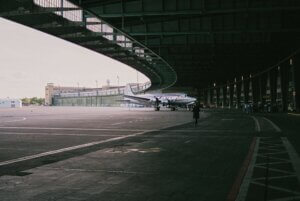Taking the proper precautions to ensure safe travels for crew and passengers is each airport operator’s top priority. Specifically, bird control at airports may be difficult based on many unique factors of your property and geographic location. Understand the threats birds can pose and what the proper airport bird control methods are for minimizing bird activity here.
What Are the Threats Birds Pose to Airports?
The biggest cause for concern for airport operators is wildlife strikes. Strikes can cause very serious damage to aircraft and can be life-threatening to passengers and crew. Smaller aircraft in particular are at an increased risk for serious damage. Propeller failure and windshield or fuselage damage are all very dangerous to smaller aircraft. Larger, pressurized aircraft are at risk of engine failure if engines are struck by birds during a flight. A plane’s landing gear can also be compromised as a result of a bird strike.
Bird strikes occur most often during the takeoff and landing phases of a flight. Not all birds fly at the high altitudes that many large enterprise aircraft fly at. While it is far less likely that bird strikes will occur during peak altitude, it is still possible. It is most common for these wildlife strikes to occur during the day when birds are most active. Flights at dusk and dawn are less likely to encounter strikes.
The Federal Aviation Administration (or FAA) has a frequently asked questions section on their website for wildlife strikes that can answer more of your safety questions.
What Parts of Your Property are a Priority? 
Specific areas of airports are more of a concern for protection based on what we know about wildlife strikes. When it comes to airport bird control, the most important areas to protect are as follows:
- Runways
- Taxiways
- Aprons (cargo and passenger loading areas)
- Helipads
- Hangars
Each area has its own unique challenges and its own set of precautions that need to be addressed to optimally deter birds.
Where Do You Start?
Minimizing the threat of birds at your airport starts with understanding local species habits, movements, and migration patterns. Contacting a wildlife expert may give you insight into what kinds of birds may be unique to your area, and what the best preventive measures may be for your situation. Once you understand that, you can start implementing airport bird control strategies.
Consider altering the habitat that surrounds your runways, taxiways, and surrounding areas of your terminal and hangers if possible. Birds like to congregate in wide-open spaces because they can see their surroundings and feel safe from predators. Cover or obstruct bodies of water and remove foliage like trees and shrubs, especially any that provide natural sources of food to birds. Also, keep the grass short so birds can’t use it as a place to hide.
Popular Airport Bird Control Solutions and Their Shortcomings
Audio and visual deterrents are commonly used to deter birds. For example, trained predatory birds or dogs are often used to deter birds from your property. While this can be effective for reducing birds that may attempt to make a home at your airport, you will need to rely on a third party to regularly implement this tactic.
More recently, drones are being used to deter birds. In some instances, the drones are even in the shape of predatory birds. While these can be effective, they are fairly expensive and require a skilled operator.
Using noise devices like air cannons or visual deterrents like lasers have also been used to reduce the number of birds at an airport. While these can be effective, birds can become accustomed to this and may ignore it after prolonged exposure.
In the same vein, predatory statues used in indoor spaces like hangars, or near aprons may deter birds from nesting. These suffer from the same faults as air cannons and lasers, because birds will eventually catch on to your plan. Placing bird spikes on signs, rafters, or runway markers can also be used to deter birds from perching or making nests.
Related: Headaches That Birds Can Cause an Airport
The Best Way to Deter Birds
Avian Migrate is the best solution to nuisance birds. The product contains a special colorant, visible only to birds, that lets them know that the area has been treated. This “teaches” unwanted geese and birds to stay away from treated areas in the future.
Birds won’t be desensitized to Avian Migrate like physical deterrents, and is effective indoors and outdoors while being safe to use near humans. Contact an Avian Control sales team member at 888.868.1982 to learn more about how our line of products can help you with airport bird control.
What Kinds of Threats Do Birds Pose to Airport Operations?
